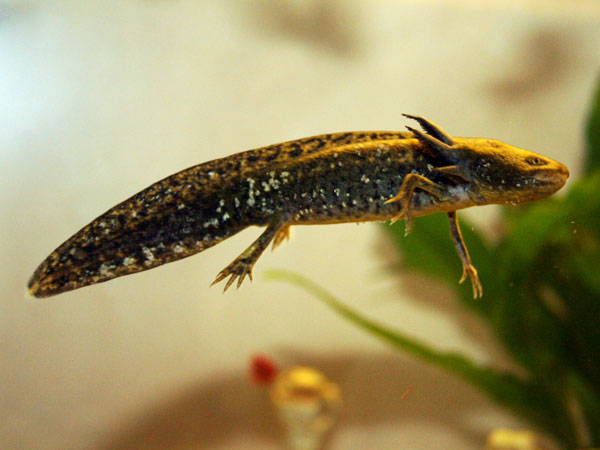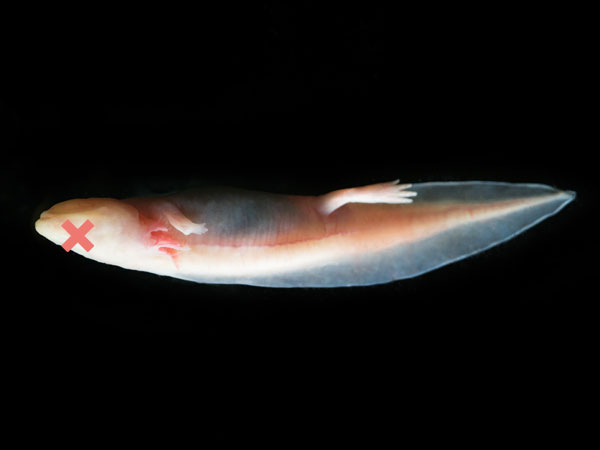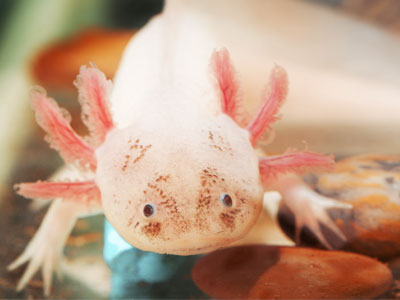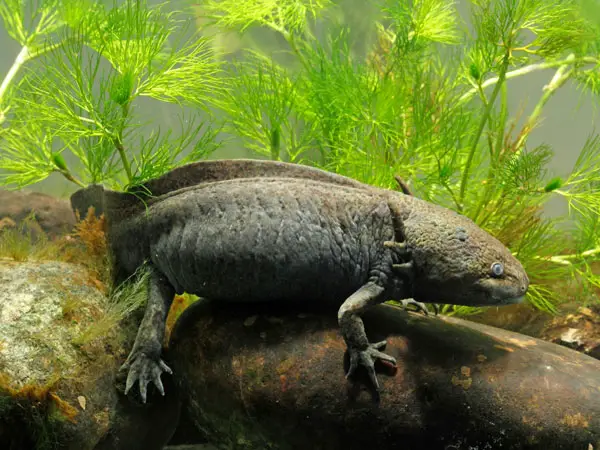One of the first things you will have to consider when setting up the tank for axolotls is the substrate. Perhaps you won’t know what substrate to choose, or you might think that it is not important.

In reality, substrate can play a big role for the quality of life of an axolotl. The wrong substrate can cause all sorts of issues. The biggest one is impaction, which happens when the axolotl ingests the substrate pieces. Now, if these pieces are small enough that the animal can digest that’s fine, but if the pieces are too big, the problems will arise.
As they ingest these substrate pieces, they will likely get stuck in the axolotl’s digestive tract. And because they are too big to get out of its body, it will lead to major problems, which include:
- Constipation
- Unwillingness to eat
- Various diseases
- In severe cases, death.
So, it turns out that the role of substrate is far greater than what you might imagine. To help you with the choice, here is the best guide of choosing the substrate for axolotls. We’ll go over each type and review its pros and cons.
Bare Bottom Tank – No Substrate
Many owners decide to have a tank without substrate. Of course, this comes with its pros and cons. The biggest pro of a bare bottom tank is that the axolotl would not have anything to ingest, so the risk is very low to zero. It’s also easy to clean, as you can see the debris and the particles that need to be cleaned very easily.
The biggest disadvantage of having no substrate is that the tank will look somewhat boring as you won’t be able to have plants. Also, a problem might arise for the axolotls, as the surface is often quite slippery, making it hard for them to move.
Pros
- The axolotl won’t be able to ingest anything.
- Very easy to clean.
Cons
- You won’t be able to have plants.
- It can be slippery.
- It would get dirty easier.
Sand Substrate
One of the best options to choose is sand. That is because even if the axolotl would ingest the sand, it is not very likely that the sand would stay in its body. Until the pieces that the animal ingests are small, it is fine. Note that this type of substrate is only appropriate for adults, and not juveniles.
You’ll also be able to have plants in the tank, so that the tank will look much more natural. Axolotls will enjoy sand, as they will be able to move around freely and without problems.
On the other hand, you should not use sand if you have juvenile axolotls, as they will not be able to pass the sand through their smaller bodies. Sand is also quite hard to clean, especially if you intend to vacuum it. Toxic gases might start to develop in the air pockets that start developing in the sand.
Pros
- If an axolotl ingests sand, it won’t impact them.
- The tank will look much more natural.
- The axolotls will be able to move around more easily.
Cons
- It is not appropriate for juvenile axolotls.
- It’s not easy to clean.
- Toxic gases might develop in pockets of air.
Ceramic Tiles
That’s right, you can even use ceramic tiles as the substrate for your tank. The best thing about it is that there is almost zero chance of impaction. You can also use the tiles in combination with other substrate types, like sand. Also, the tank would look much more interesting and appealing with tiles.
On the other hand, tiles can be slippery, so the axolotl might struggle. Also, you won’t be able to have any plants in the tank.
Pros
- Almost no chance of impaction.
- Can be combined with other types of substrate.
- It will look interesting.
Cons
- Certain types of tiles might be slippery.
- You won’t be able to have plants.
- Some types of tiles will get dirty.
Large Rocks
The focus is on the word large. The rocks should be large enough so that the axolotl won’t ingest them. Ideally, they should be larger than an axolotl’s head, so about the size of your fist. It will look very natural in your tank, and will provide a lot of grip for the axolotls to move around. They look exceptional for the aquarium.
If you cover the entire bottom of the tank with rocks, it can be expensive, as these rocks can cost quite a lot. Also, it will be difficult to clean the spaces between the rocks without removing them from the tank; debris will collect there, and algae. You won’t grow plants, either.
Pros
- No chance of impaction.
- It will look very natural.
- They provide a lot of grip.
Cons
- Can be expensive.
- Hard to clean the spaces between the rocks.
- Algae might start to collect.
Bad Substrate for Axolotls
The worst type of substrate for axolotls is gravel. Many people like to buy this type, but it is perhaps the worst option. Axolotls will be able to ingest most of these types of gravel, as they are big enough to fit in their mouths, and it can cause impaction.
Another bad option are the pebbles and rocks that will fit in the axolotl mouth. Similarly, these will get easily ingested and will stay with them.
Glass stones and plastic rocks should also be avoided for similar reasons.
How to Clean Aquarium Substrate?
Depending on the substrate, there will be different methods of cleaning it. The most common one is probably by using a gravel vacuum. With it, you’ll be able to clear most of the debris and dirt that gets collected in the substrate. An important thing is to be consistent with your cleaning.
Conclusion
So, there you have it, these are the best types of substrate for axolotls. Avoid the types of substrate that can be ingested by the axolotls and then have no way of getting out of their bodies.





I’m starting a new tank and I’m a first-time owner. I was considering the Seachem Flourite black sand. I cannot find anything saying if the type and color is ok for a grown axolotl. Thanks!